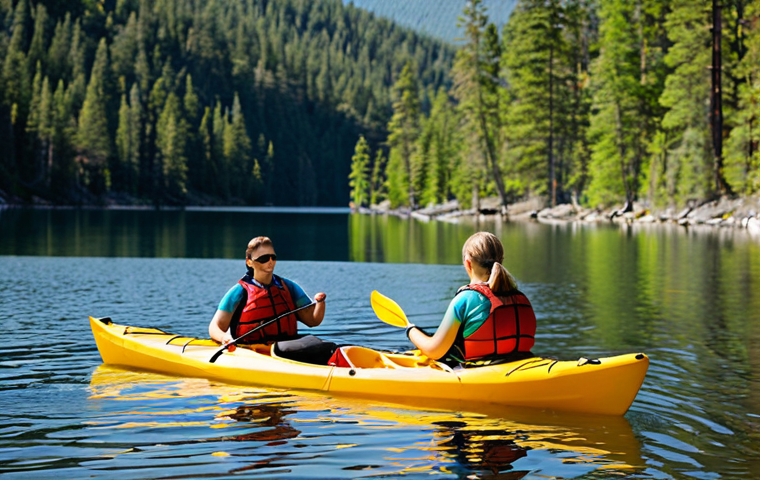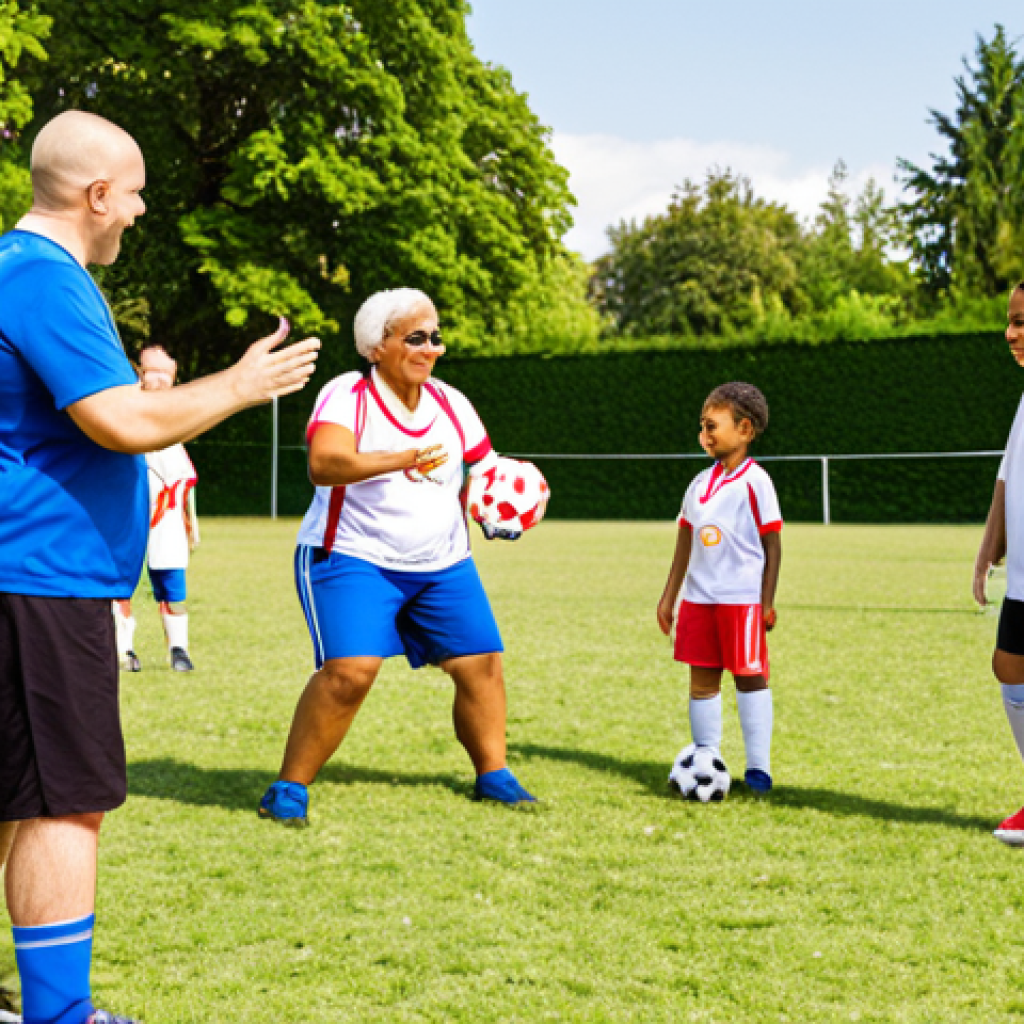So, you’re diving into the world of leisure sports leadership and prepping for those practical exams? Awesome! It’s a challenging but super rewarding field, especially as more people are looking for ways to stay active and connected to the outdoors.
From what I’ve seen, examiners are really looking for candidates who can not only demonstrate the technical skills but also create engaging and safe experiences.
The key, I think, is to master the art of crafting compelling practice scenarios that reflect real-world situations. The more realistic and adaptable you are, the better you’ll perform.
Let’s get a clearer picture of how to make that happen. Let’s get a clearer picture of how to make that happen in the following article.
Alright, let’s get this show on the road! Here’s some guidance on crafting those killer practice scenarios for your leisure sports leadership practical exams.
Crafting Authentic Scenario Settings

It’s not enough to just know the rules and techniques. Examiners want to see you can handle the unexpected, just like in real life. Think about the setting – is it a crowded park, a serene lake, or a bustling community center?
Each location brings its own challenges and opportunities. I remember one exam where the candidate set the scene in a “post-apocalyptic” urban playground.
It was creative, sure, but completely irrelevant. Let’s aim for authentic!
Incorporating Environmental Factors
Think about the weather. Is it a scorching summer day, or a crisp autumn afternoon? Does the scenario involve a sudden downpour, or gusty winds?
These environmental conditions can significantly impact participant safety and enjoyment. For example, a kayak tour on a windy day will require different safety protocols than one on a calm day.
I once had to adapt a soccer clinic on the fly when a swarm of bees decided to join our game. Keeping participants safe and engaged meant changing drills to minimize running and staying close to the equipment.
Addressing Unexpected Incidents
What if someone sprains an ankle? Or a participant has a panic attack during a high-ropes course? These are the moments that separate good leaders from great ones.
Having a plan in place for these eventualities is key. First aid certifications are a must, but so is your ability to stay calm, assess the situation, and take appropriate action.
In my years of coaching, I’ve seen everything from minor scrapes to full-blown medical emergencies, and being prepared with clear protocols and emergency contacts can make all the difference.
Mastering Communication and Instruction
How you communicate is just as important as what you communicate. Keep your instructions clear, concise, and engaging. Use inclusive language and be mindful of different learning styles.
Remember, some people learn best by seeing, others by hearing, and still others by doing. When I teach surfing, I always start with a dry-land demonstration, then walk each student through the motions individually before they even get in the water.
It’s about finding that sweet spot where everyone feels supported and confident.
Using Inclusive Language and Tone
Inclusive language isn’t just about being politically correct – it’s about creating a welcoming and supportive environment for everyone. Avoid jargon, speak clearly, and be mindful of cultural differences.
It’s also crucial to adapt your communication style to different age groups and ability levels. When leading a group of seniors on a nature walk, I speak slower and use simpler language than when I’m coaching a team of competitive cyclists.
Adapting to Different Learning Styles
Some people are visual learners, others are auditory learners, and still others are kinesthetic learners. The best instructors cater to all three styles.
Use demonstrations, clear verbal instructions, and hands-on activities to ensure everyone is engaged and learning. I had a tennis coach who used to say, “Show them, tell them, and let them do it.” That simple advice has stuck with me ever since.
Ensuring Safety and Risk Management
Safety isn’t just a checklist – it’s a mindset. It starts with a thorough risk assessment, and continues with proactive measures to prevent accidents.
Always inspect equipment before use, provide clear safety briefings, and monitor participants closely. And remember, even the most well-planned activities can have unexpected risks.
Conducting Thorough Risk Assessments
Before any activity, take the time to identify potential hazards and assess their likelihood and severity. This will help you develop appropriate safety protocols and contingency plans.
Think about everything from the terrain and weather conditions to the skill level of participants and the availability of emergency services. After a rock climbing incident, it was determined that better assessments should have been performed.
Implementing Emergency Protocols
Make sure you have a plan in place for dealing with emergencies, such as injuries, weather changes, or equipment malfunctions. This plan should include clear communication channels, evacuation procedures, and access to first aid supplies and emergency medical services.
Regularly review and practice your emergency protocols to ensure everyone knows what to do in a crisis.
| Scenario Element | Example | Importance |
|---|---|---|
| Setting | Crowded park, calm lake, community center | Adds realism and context |
| Weather Conditions | Sudden rain, gusty winds, extreme heat | Impacts safety protocols and participant comfort |
| Unexpected Incidents | Sprained ankle, panic attack, equipment malfunction | Tests leadership and problem-solving skills |
| Communication Style | Inclusive language, clear instructions, adaptive tone | Promotes engagement and understanding |
| Safety Measures | Risk assessments, equipment inspections, emergency protocols | Ensures participant well-being and minimizes risk |
Cultivating Leadership and Decision-Making Skills
Being a leader isn’t just about telling people what to do – it’s about inspiring them, motivating them, and empowering them to succeed. It also involves making tough decisions under pressure.
Create scenarios that challenge your leadership skills and test your ability to think on your feet.
Delegating Tasks Effectively
Effective leaders know how to delegate tasks to others, empowering them to take ownership and develop their skills. This not only frees up your time, but also builds trust and collaboration within the team.
Identify individuals’ strengths and assign them tasks accordingly, providing clear instructions and support.
Resolving Conflicts and Disputes
Conflicts are inevitable in any group setting, but how you handle them can make or break the experience. Be prepared to mediate disputes, listen to different perspectives, and find solutions that are fair and equitable.
Remember, the goal is not to win the argument, but to find a resolution that everyone can live with.
Optimizing Engagement and Fun
At the end of the day, leisure sports are all about having fun. Design scenarios that are engaging, enjoyable, and memorable. Think about ways to add elements of challenge, competition, or creativity.
And don’t be afraid to let your own personality shine through.
Incorporating Elements of Challenge and Competition
A little healthy competition can add excitement and motivation to any activity. Think about ways to incorporate elements of challenge, such as timed races, skill-based contests, or team-building games.
Just be sure to keep it fun and inclusive, and avoid creating situations where participants feel pressured or discouraged.
Fostering a Positive and Supportive Environment
The most important thing is to create an environment where everyone feels welcome, supported, and valued. Encourage participants to support each other, celebrate successes, and learn from failures.
Remember, the goal is not just to teach skills, but to build confidence and create positive memories. Alright, let’s get this show on the road! Here’s some guidance on crafting those killer practice scenarios for your leisure sports leadership practical exams.
Crafting Authentic Scenario Settings
It’s not enough to just know the rules and techniques. Examiners want to see you can handle the unexpected, just like in real life. Think about the setting – is it a crowded park, a serene lake, or a bustling community center? Each location brings its own challenges and opportunities. I remember one exam where the candidate set the scene in a “post-apocalyptic” urban playground. It was creative, sure, but completely irrelevant. Let’s aim for authentic!
Incorporating Environmental Factors
Think about the weather. Is it a scorching summer day, or a crisp autumn afternoon? Does the scenario involve a sudden downpour, or gusty winds? These environmental conditions can significantly impact participant safety and enjoyment. For example, a kayak tour on a windy day will require different safety protocols than one on a calm day. I once had to adapt a soccer clinic on the fly when a swarm of bees decided to join our game. Keeping participants safe and engaged meant changing drills to minimize running and staying close to the equipment.
Addressing Unexpected Incidents
What if someone sprains an ankle? Or a participant has a panic attack during a high-ropes course? These are the moments that separate good leaders from great ones. Having a plan in place for these eventualities is key. First aid certifications are a must, but so is your ability to stay calm, assess the situation, and take appropriate action. In my years of coaching, I’ve seen everything from minor scrapes to full-blown medical emergencies, and being prepared with clear protocols and emergency contacts can make all the difference.
Mastering Communication and Instruction
How you communicate is just as important as what you communicate. Keep your instructions clear, concise, and engaging. Use inclusive language and be mindful of different learning styles. Remember, some people learn best by seeing, others by hearing, and still others by doing. When I teach surfing, I always start with a dry-land demonstration, then walk each student through the motions individually before they even get in the water. It’s about finding that sweet spot where everyone feels supported and confident.
Using Inclusive Language and Tone
Inclusive language isn’t just about being politically correct – it’s about creating a welcoming and supportive environment for everyone. Avoid jargon, speak clearly, and be mindful of cultural differences. It’s also crucial to adapt your communication style to different age groups and ability levels. When leading a group of seniors on a nature walk, I speak slower and use simpler language than when I’m coaching a team of competitive cyclists.
Adapting to Different Learning Styles
Some people are visual learners, others are auditory learners, and still others are kinesthetic learners. The best instructors cater to all three styles. Use demonstrations, clear verbal instructions, and hands-on activities to ensure everyone is engaged and learning. I had a tennis coach who used to say, “Show them, tell them, and let them do it.” That simple advice has stuck with me ever since.
Ensuring Safety and Risk Management
Safety isn’t just a checklist – it’s a mindset. It starts with a thorough risk assessment, and continues with proactive measures to prevent accidents. Always inspect equipment before use, provide clear safety briefings, and monitor participants closely. And remember, even the most well-planned activities can have unexpected risks.
Conducting Thorough Risk Assessments
Before any activity, take the time to identify potential hazards and assess their likelihood and severity. This will help you develop appropriate safety protocols and contingency plans. Think about everything from the terrain and weather conditions to the skill level of participants and the availability of emergency services. After a rock climbing incident, it was determined that better assessments should have been performed.
Implementing Emergency Protocols
Make sure you have a plan in place for dealing with emergencies, such as injuries, weather changes, or equipment malfunctions. This plan should include clear communication channels, evacuation procedures, and access to first aid supplies and emergency medical services. Regularly review and practice your emergency protocols to ensure everyone knows what to do in a crisis.
| Scenario Element | Example | Importance |
|---|---|---|
| Setting | Crowded park, calm lake, community center | Adds realism and context |
| Weather Conditions | Sudden rain, gusty winds, extreme heat | Impacts safety protocols and participant comfort |
| Unexpected Incidents | Sprained ankle, panic attack, equipment malfunction | Tests leadership and problem-solving skills |
| Communication Style | Inclusive language, clear instructions, adaptive tone | Promotes engagement and understanding |
| Safety Measures | Risk assessments, equipment inspections, emergency protocols | Ensures participant well-being and minimizes risk |
Cultivating Leadership and Decision-Making Skills
Being a leader isn’t just about telling people what to do – it’s about inspiring them, motivating them, and empowering them to succeed. It also involves making tough decisions under pressure. Create scenarios that challenge your leadership skills and test your ability to think on your feet.
Delegating Tasks Effectively
Effective leaders know how to delegate tasks to others, empowering them to take ownership and develop their skills. This not only frees up your time, but also builds trust and collaboration within the team. Identify individuals’ strengths and assign them tasks accordingly, providing clear instructions and support.
Resolving Conflicts and Disputes
Conflicts are inevitable in any group setting, but how you handle them can make or break the experience. Be prepared to mediate disputes, listen to different perspectives, and find solutions that are fair and equitable. Remember, the goal is not to win the argument, but to find a resolution that everyone can live with.
Optimizing Engagement and Fun
At the end of the day, leisure sports are all about having fun. Design scenarios that are engaging, enjoyable, and memorable. Think about ways to add elements of challenge, competition, or creativity. And don’t be afraid to let your own personality shine through.
Incorporating Elements of Challenge and Competition
A little healthy competition can add excitement and motivation to any activity. Think about ways to incorporate elements of challenge, such as timed races, skill-based contests, or team-building games. Just be sure to keep it fun and inclusive, and avoid creating situations where participants feel pressured or discouraged.
Fostering a Positive and Supportive Environment
The most important thing is to create an environment where everyone feels welcome, supported, and valued. Encourage participants to support each other, celebrate successes, and learn from failures. Remember, the goal is not just to teach skills, but to build confidence and create positive memories.
Wrapping Up
Mastering the art of creating realistic practice scenarios is crucial for excelling in leisure sports leadership exams. By focusing on authentic settings, clear communication, robust safety measures, and fostering engagement, you’ll be well-prepared to showcase your leadership abilities. Remember, practice makes perfect, and each scenario is an opportunity to learn and grow.
Useful Information
1. Always have a first-aid kit readily available and ensure you are certified in basic first aid and CPR.
2. Familiarize yourself with local emergency services and have their contact information easily accessible.
3. Regularly update your knowledge of safety protocols and best practices for different sports and activities.
4. Consider taking additional courses in leadership and risk management to enhance your skills and knowledge.
5. Network with other leisure sports professionals to share experiences and learn from each other’s insights.
Key Takeaways
Effective scenario design hinges on realism, safety, and clear communication. Focus on creating situations that mirror real-world challenges, prioritize participant well-being, and cultivate an inclusive and engaging environment.
Frequently Asked Questions (FAQ) 📖
Q: What’s the most common pitfall leisure sports leadership candidates face during practical exams, and how can I avoid it?
A: Honestly, based on what I’ve witnessed at certification events, the biggest stumbling block is failing to adapt to unexpected changes in the scenario.
Examiners love throwing curveballs, like a sudden equipment malfunction or a participant with an injury simulation. To avoid this, practice your improvisation skills.
I mean, really drill down on your “what if” scenarios. For instance, if you’re leading a kayaking session, what happens if a kayak capsizes far from shore?
Map out your responses, have backup plans for your backup plans, and most importantly, stay calm and project confidence. It shows you’re prepared to handle anything the great outdoors throws at you.
Q: How important is participant engagement in leisure sports leadership, and what are some concrete ways to make a practice scenario feel less like a test and more like a fun activity?
A: Engagement is EVERYTHING. You could have the best technical skills in the world, but if your participants look like they’re attending a mandatory meeting, you’ve already lost.
The trick is to build rapport immediately. Start with an icebreaker that’s actually fun (not just a round of names and hobbies!), make eye contact, use humor where appropriate (but keep it clean!), and actively solicit feedback.
I once saw a candidate leading a rock-climbing session, and he made it a point to highlight each participant’s progress and offer personalized encouragement.
It totally transformed the atmosphere. Remember, you’re not just leading an activity; you’re creating an experience.
Q: How can I realistically demonstrate risk management skills during a leisure sports leadership practical exam without coming across as overly cautious or paranoid?
A: Ah, risk management. It’s a delicate balance. No one wants a leader who’s a complete daredevil, but you also don’t want to be so cautious that you suck all the fun out of the activity.
The key is to be proactive, not reactive. Before you even start, clearly outline the potential risks and the safety measures you’ve put in place. For example, if you’re leading a mountain biking tour, point out the importance of wearing helmets, demonstrate proper braking techniques, and identify areas that require extra caution.
During the activity, constantly scan the environment for potential hazards and make adjustments as needed. For instance, if the weather takes a turn for the worse, be prepared to modify the route or even call it off entirely.
Don’t just state the obvious – “be careful” – explain why something is risky and how participants can mitigate that risk. It shows you’re not just checking boxes; you’re genuinely concerned for their well-being and are making informed decisions based on the changing environment.
📚 References
Wikipedia Encyclopedia
구글 검색 결과
구글 검색 결과
구글 검색 결과
구글 검색 결과
구글 검색 결과






